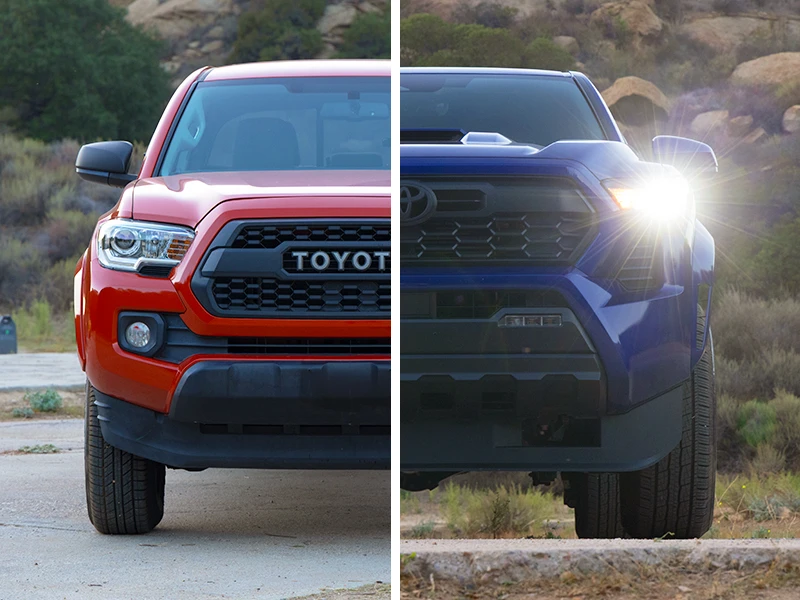
***
New to the electric car game? Here are a few tips.
Making the jump to an electric vehicle might seem daunting at first. There are new terms and aspects of car ownership to consider. For example, road trips require more planning and it’s not uncommon for the advertised range for a given EV to be less than the real-world result. But there's more to owning an EV than range, and with that in mind, here are five things you need to know before owning an electric vehicle. There are also different maintenance costs to consider.
What Does "Electrified" Mean?

You'll often see the term "electrified" when automakers advertise their vehicles, but that doesn't mean an electrified vehicle is a pure electric car. We have an article that goes into more detail, but basically, there are three broad groups: hybrids, plug-in hybrids, and electric cars.
Hybrids (sometimes called HEVs) use a gas engine and an electric motor to create power and conserve fuel. It does not need to be charged.
A plug-in hybrid (PHEV for short) has a bigger battery than a regular hybrid and can be plugged in, allowing it to run for about 25-50 miles solely on electric power, after which it reverts to a hybrid.
An all-electric vehicle (EV for short) has a larger battery and doesn’t use any gasoline. We'll be focusing on EVs for this article.
1. Familiarize Yourself with Quirky EV Features

Nearly every EV manufacturer has added unique features to make it feel more special or futuristic. Knowing what quirks to look for can help you choose between cars based on your preferences.
One-pedal driving
Regenerative braking is a method of regaining lost energy while the vehicle is slowing down or braking. Many modern EVs take this a step further and use something called "one-pedal driving."
Don't worry, there's still a separate brake pedal, but by using aggressive regenerative braking an EV can come to a complete stop on its own without the driver ever touching the brake pedal.. It's useful for getting every last mile from a charge, but the aggressive deceleration it can cause when you let off the accelerator pedal can take some getting used to. It can even make some people motion sick.
Every manufacturer tunes theirs differently, and some allow the driver to adjust its intensity, or shut it off entirely. Even the brake pedal itself can have a sort of spongy feel to it and may require a learning curve to stop smoothly.
Door handles
Unorthodox door handles have found their way to nearly every EV. For example, the Ford Mustang Mach-E requires a button press to open the door, the Tesla Model Y handle lifts toward the back of the car, and the Hyundai Ioniq 5 has flat handles that pop out when you unlock them.
Touchscreen madness
The use of touchscreens to control many functions is another popular trend, with Tesla and Rivian being the biggest proponents. Things like adjusting the side mirrors, steering wheel, and climate controls are all done in the center screen rather than with dedicated buttons on the dash.
Not everyone adheres to this design philosophy, so if you're worried this might be distracting or frustrating, take a look at other EVs before making a decision.
Where’s the start button?
Even starting the car can be quirky. Tesla and Rivian forgo the traditional push-button starter, and instead, you start the vehicle by sitting in the driver’s seat and quickly pressing the brake pedal. If you aren’t quick enough, on a Tesla you’ll have to hold a key card in a special place on the center console.
2. Understand How Driving Range Will Vary
Every EV has an EPA-estimated range, which is how far the vehicle can go on a single charge, and it's easily the most important EPA figure you’ll see.
Let's take a 2020 Chevrolet Bolt as an example. It has an EPA-estimated 259 miles of range, but you'll rarely have max range at your disposal every day. For one thing, most manufacturers recommend that your day-to-day charging should fill the battery to about 80%, not the full 100%, since the latter can impact how long the battery lasts.
In the Bolt's case, this gives us a range of about 207 miles. And in the same way you don’t drive your gas car until the tank is empty, you're not going to drive the EV until the battery dies. Instead, you'll want to leave a range buffer of roughly 20% of your battery, or about 20-30 miles to get home or to a charger. This buffer leaves us with a usable range of about 182 miles. That’s still a lot of miles, but not the full range.
Other elements that affect an EV's range include the ambient temperature, the number of accessories you're using in the car, the incline of the road, and the speed you're driving. This article goes more into detail regarding range and the factors that affect it.
3. Know the Differences Between Chargers and Their Speeds
The charger on an EV is technically inside the car, but the term is often used interchangeably with the cord and box that plugs into an outlet. There are three methods to charging an electric vehicle: Level 1, Level 2, and DC fast charging (sometimes called Level 3). We'll briefly go over them here, but we recommend taking a look at this article for a deeper dive.
A Level 1 charger uses one of the 120-volt outlets found all around your home or garage. This is the slowest form of charging, as it adds roughly 5 miles of range per hour, according to Recurrent Auto, an EV battery health research firm.
A Level 2 charger uses a 240-volt plug, similar to the kind used for some electric stoves. This is the fastest method to charge at home and provides about 25 miles of range per hour.
As the name suggests DC fast chargers are the quickest way to charge your EV. These stations, often located near businesses or restaurants, are measured in kilowatts and can range from 25 kW up to 350 kW (a higher number is faster). An EV can add anywhere between 100 and 200 miles of range per 30 minutes of charging at one of these stations.
Every EV has its own charge speed limit that is dictated by the vehicle's battery software. On the Bolt, that limit is 55 kW. It’s important to learn this number as a courtesy to other EV drivers. In other words, using a 350-kW fast charger will give you no added benefit compared to a 50-kW station. Plus, you would be preventing a vehicle that can handle the faster charge speeds from using that station.
If you plan on relying on public chargers rather than charging at home, know that it’s going to take time and effort out of your week. Public chargers usually aren't free and often limit charging time to an hour, and their costs can vary by speed, time of day, and location.
4. Prepare Your Home for EV Charging

Most people will charge their EVs at home, either in the garage or driveway. It’s important to contact an electrician familiar with EV chargers to install your Level 2 charger.
Even if you have a 240-volt plug in your garage, it might need to be repositioned or your home's electrical grid may not be able to handle the added draw. The inspection, labor, and parts (if buying a charger) can cost upward of $1,000, so make sure you get multiple price quotes and plan your budget accordingly.
Contact your local utility company to see if there are special rates for your EV. Some will offer either discounted rates for charging at night or a rebate for going electric.
Also, don’t think you can skimp on the electrician by using an extension cord from your garage to the EV in the driveway. Many automakers caution against this method because the extension cord may not be properly rated, and it could even start a fire.
5. Plan Longer Trips Accordingly
It is OK to charge your EV's battery to 100% for road trips. This isn't an everyday occurrence, so it shouldn't harm the battery. Longer trips will require more planning, though. To ensure you have enough range, use a mapping app like Google Maps to calculate the distance in miles of the places you’re going..
Let's say you have a relative who lives 75 miles away. Then you go to dinner 9 miles away. In the case of the Chevy Bolt, you would be starting with a full charge of about 259 miles. After a round-trip visit to both locations, you'd have about 91 miles remaining. This is a comfortable buffer that allows for using climate control and traveling at highway speeds.
If your travels take you about as far as your EV's range, you'll need to make sure there is a charger near your destination. Some EVs can search for chargers via their onboard navigation, but crowdsourced apps like PlugShare are usually updated more frequently. We recommend filtering the search for DC fast chargers so you don't have to wait hours for a charge to finish on a Level 2. Keep a nearby backup charger location in mind since it’s not uncommon to find a charging station either full of cars or out of order.
Conclusion
It may feel like a lot of information to take in, but the good news is that it won’t take long for the nuances of EV ownership to become second nature. Take the time to learn about charging and EV range and soon you'll be an expert and can pass on that knowledge to a friend or neighbor.




